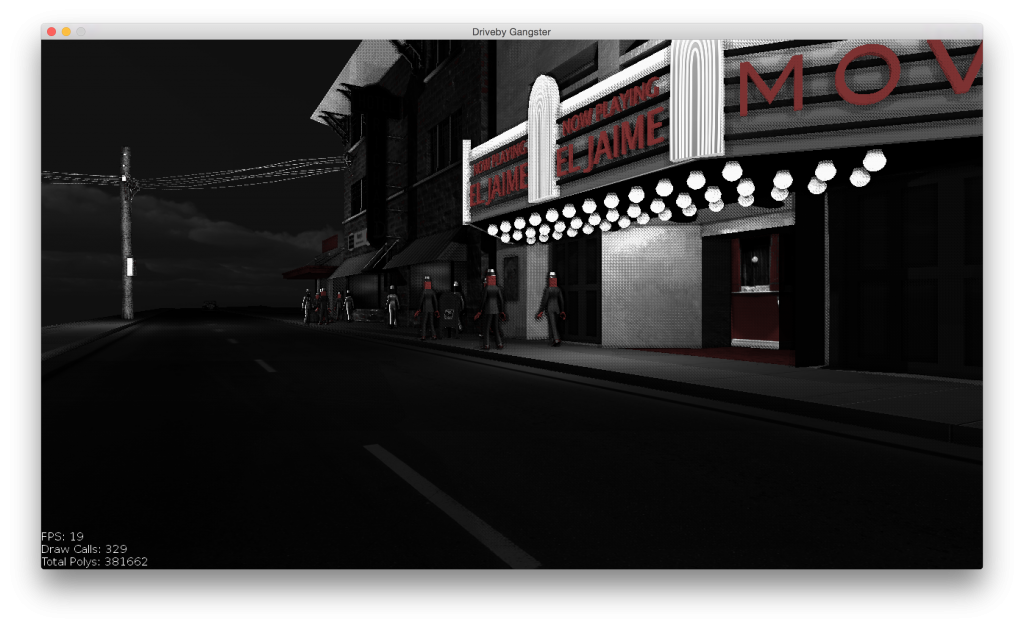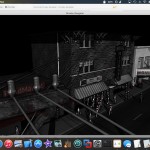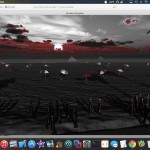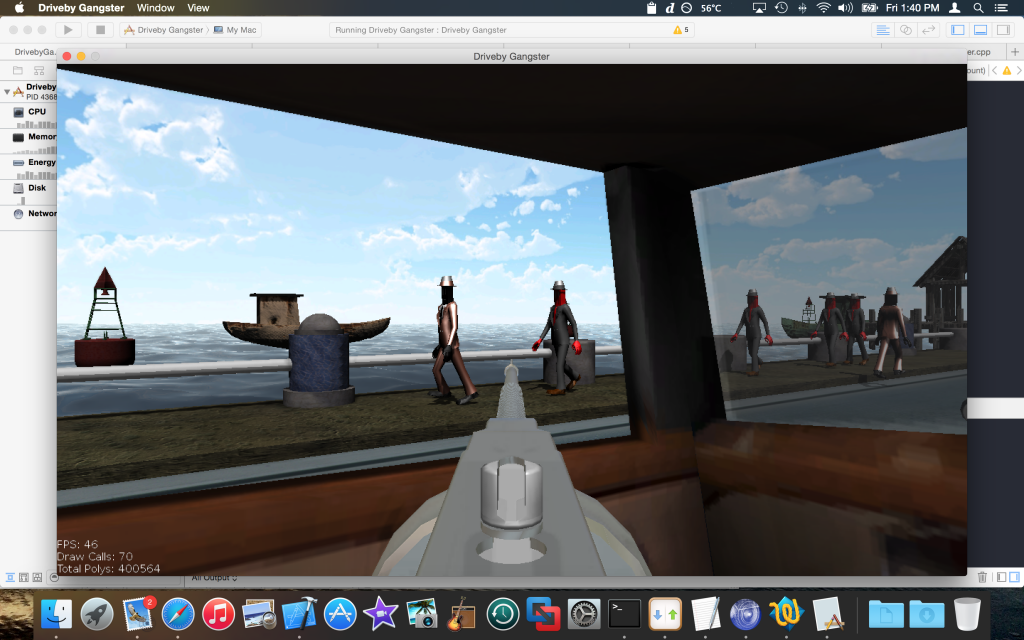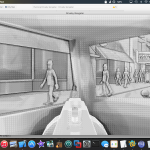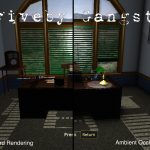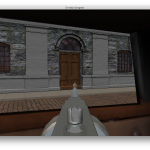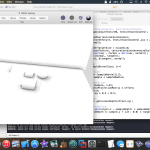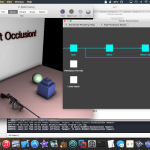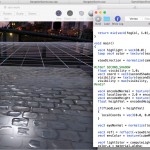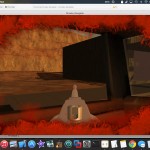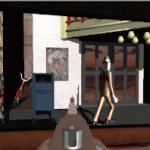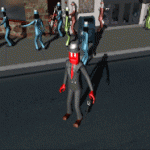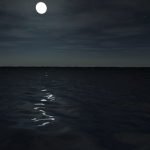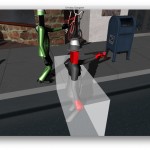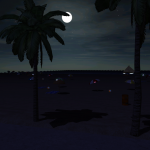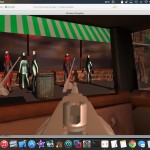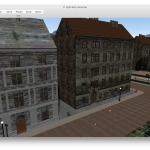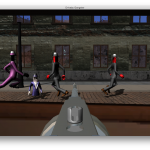Still working on things..
Category Archives: Game Development
Push through to the end
After a long vacation abroad during the past month or so, it is a must that this game will meet it’s goal of completion in march. I’ve pushed through to level 19 today with great progress. The new newspaper-esque art style looks really good and at this point, it’s just a race to the finish line. The coolest thing about experimentation sometimes is how you stumble on to a specific kind of rendering style by accident. I’ve found that by using the same SSAO technique that I have previously implemented while removing the depth-checking produces a dark outline halo around most models in the scene. While for generalized SSAO this would be undesirable, I love the way it looks and have decided to make it part of the art style for the dark/noire second-half section of the game. Combining that effect with a lack of the blur post-processing effect on the noisy SSAO results in the very newspaper/comicbook style that I was already going for.
Needless to say, things are going well now that I’m back at it.
New level environment
So I had to make a tough choice recently. The game originally planned to have 36 levels in sets of 12. Each 12 would feature a specific art style, decreasing in realism with each set. A major snag related to my own lack of art skills alongside an increasingly pushed back completion date for this game has lead me to make a change to this plan.
Toonshaded games are not as graphically “simple” as they appear to be. I quickly realized this while attempting to adapt one of my environments for this look. A perfect example would be to look at any recent celshaded game such as Zelda Windwaker HD. You will notice that all the textures are hand painted with a very high attention to detail an artistic quality. This is an artistic talent that I simply do not possess, and it would be a mistake to pretend that I do.
So what I’m going to do instead is break up the game into two halves of 15 levels each, and bring the total level count down to 30. This will allow me to do just one alternate art style (an easier to render dark noire style) for the final half of the game. Combining the dark black and white effect with the recently implemented SSAO effect that I’ve added to the game should look really cool for these last 15 levels.
The only remaining problem with this new plan is that I only had 12 levels done sofar and I would really hate to re-hash the same 3 environments again to fill the last 3 before changing art styles. This lead me to the decision to make yet another new 3D environment for the game which I’ll use to create 3 more levels. I initially really didn’t want to do this because I am approaching a burnout risk for the game, meaning I’m starting to get tired of working on it.. which puts the entire project at risk. So, I decided that It’ll be a simpler level so that I can keep the total game size low (both in disk space and complexity). I’ve posted a screenshot of what I’ve got sofar for that level.
Ambient Occlusion
So I got the ambient occlusion effect implemented in the actual game shader code. I followed the technique outlined in this article. I must say, it’s very subtle, but it looks nice. The real benefit here is that when I turn off the “check depth range” mechanism, I get a very awesome surreal dark outline around all of the models in the scene. This will be an excellent effect to use when I work on the second half of the game (which will use an artistic black and white noire post processing style signifying the protagonists slowly weakening grip on reality).
I didn’t understand how ambient occlusion worked at all before implementing the effect, but now I must say, I have a pretty reasonable grasp on it. Basically in one brief description, it takes random samples at every point on the surface to determine how much ambient light from the rest of the scene can reach that point. In other words, how much of the ambient light is occluded by other nearby surfaces. This is done by randomly sampling points within a small hemisphere emanating from the surface. What makes SSAO so nice, is that this technique is approximated entirely in screen space, making it reasonable for real-time rendering in a game. The downside is it seems to be a little noisy and I see artifacts from time to time on the screen, but hopefully I’ll be able to clean some of that up in time.
Below are some more progress shots showing the kinds of subtle shadowing I can achieve using SSAO in the VGLPP/DrivebyGangster engine.
Ambient Occlusion!
Today was huge! I am exhausted. I busted my ass today to get an affect known as screen-space ambient occlusion (SSAO) working in a prototype scene in verto studio. Right when I was about to give up, I got it working! I’m too groggy to explain anything about it, so I’ll just post pictures!
This is going to add a huge boost to the visual look-and-feel of the game without a severe performance penalty. Needless to say, I’m pretty stoked!
Driveby Gangster is on Steam greenlight!
If you’ve been following this game and you want to see it on steam please head over to the greenlight page and vote yes!
Bunch of progress shots
Still going…
Too far to turn back now. Progress has been steady. I’ll post some shots this weekend. Level 8 is done. I’ve added a really awesome new game mechanic (randomly distributed hostile gangsters) for level 7 and up that makes the gameplay a lot more intense. My initial playthroughs of this new mechanic have been awesome and I find myself almost unable to think I have to react so fast which is exactly the kind of gameplay action that I’m going for.
I’ve decided to try to do one new level of the game per day until it’s done. If I can do this, I’ll be on track to have the game done by some time in April like I’ve been planning for. Let’s see how it goes. I still cannot believe that I originally thought this game could be done in a matter of weeks. Granted that I’ve increased the game beyond its original scope, 2 weeks even for a most basic version of this game is way way off.
Playtesting demos!
Here they are, the public play testing demos! These are downloadable and playable on just about any recent computer (recent meaning 2012 ish). Older laptops may struggle and older older laptops will struggle hard. I wouldn’t expect this game to run on any pre-600 series nvidia card or equivalent amd card. Intel HD 4000 was tested but that’s it from the intel family, so I expect that’s the required card for intel.
Feel free to grab these, play the crap out of the demo, and don’t hold back in giving me feedback. This’ll be the first time I get any real feedback for this game so let me have it!
Edit: these have likely expired by now as the actual game has been finished
Mac – http://vertostudio.com/playtest/gd-playtest-mac.zip
Win – http://vertostudio.com/playtest/gd-playtest-win.zip
Downloads are a little dodgy from my server so you may have to retry once or twice to get it.
Also, IF IT CRASHES, please email or contact me immediately so I can find out what went wrong. There’s one sound-related windows crash that I haven’t fully nailed down yet but I expect it to be quite rare. Either way, if that happens, please let me know via email or on here.
Pushing for playtest demo
Not a lot of updates here lately because I’ve been working hard to get to the point where I can post a playtest demo and get some early feedback for the game. The demo will feature the first six levels of the game which I’m tying off today.
An early screen shot of the sixth level is below..
It was a pain to convert and simplify all of the “night time” shaders that I had for the night fog scene back into “day mode”. But I got it done. I also noticed that with the fog lifted, the original scene was way to simple so I had to add some desert in the distance and some extra buildings to make it look more presentable.
